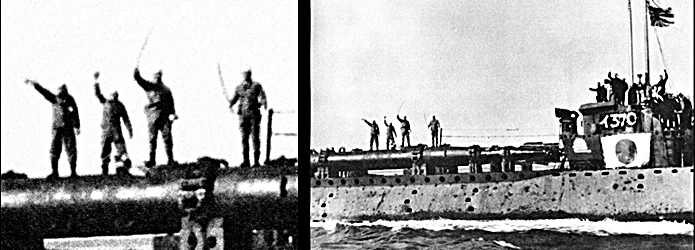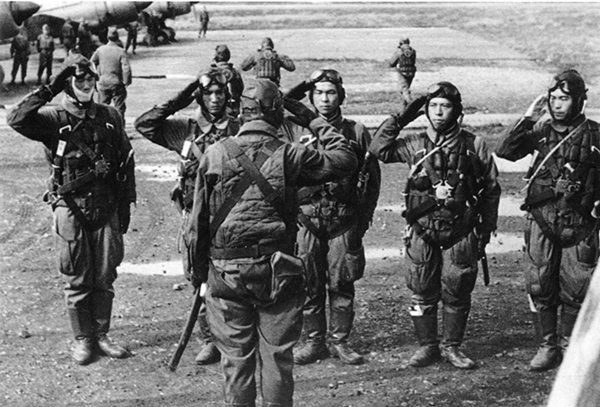
I-370 submarine which moors five sets "Kaiten" of human-torpedoes to the deck of a front and the back,
and sorties the Yamaguchi Hikari base. on February 21, 1945.
The members of Chihaya Unit of Kaiten Special Attack Unit shake a Guntō on "Kaiten",
and they said good-bye of the last to the mountains and rivers of their country.
